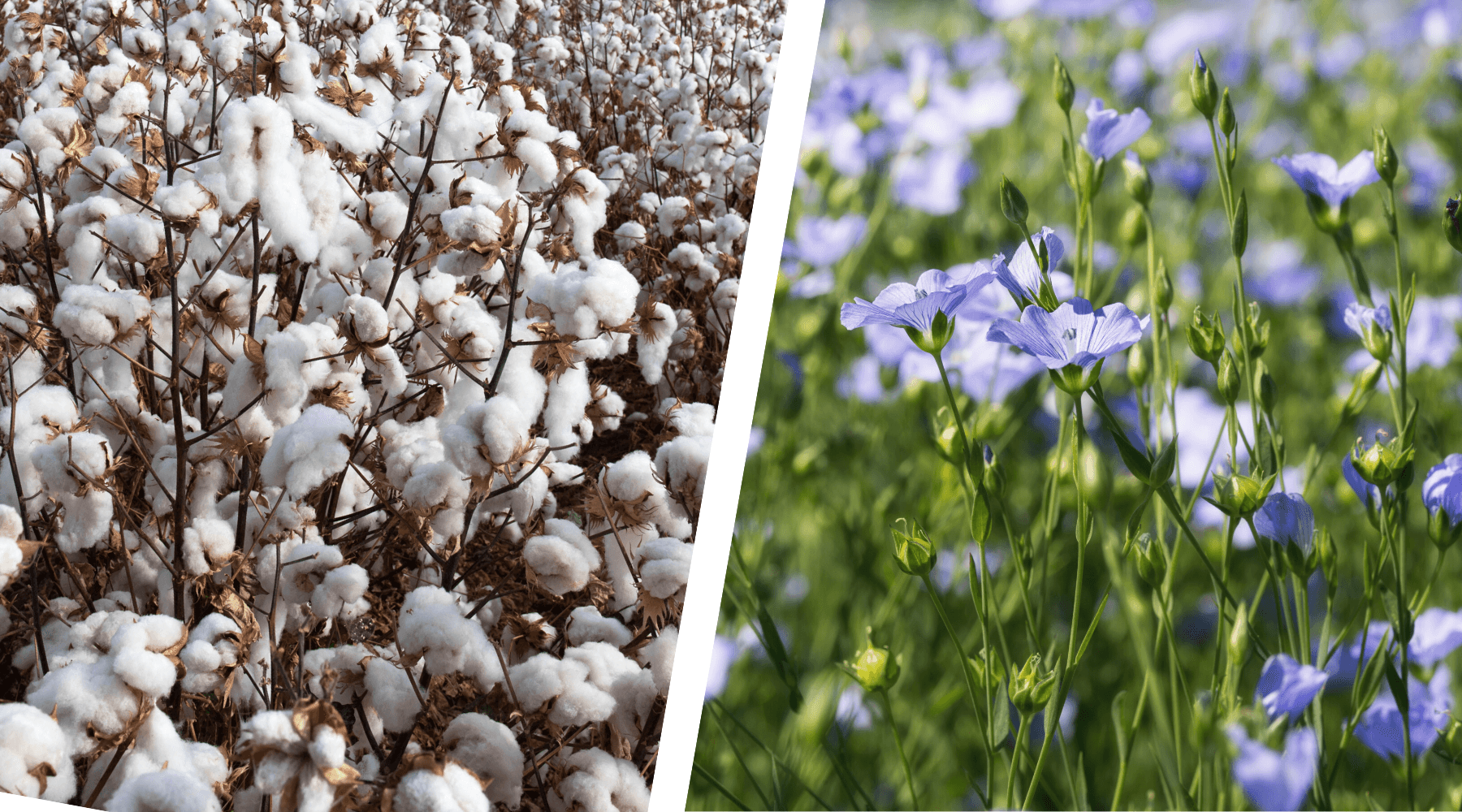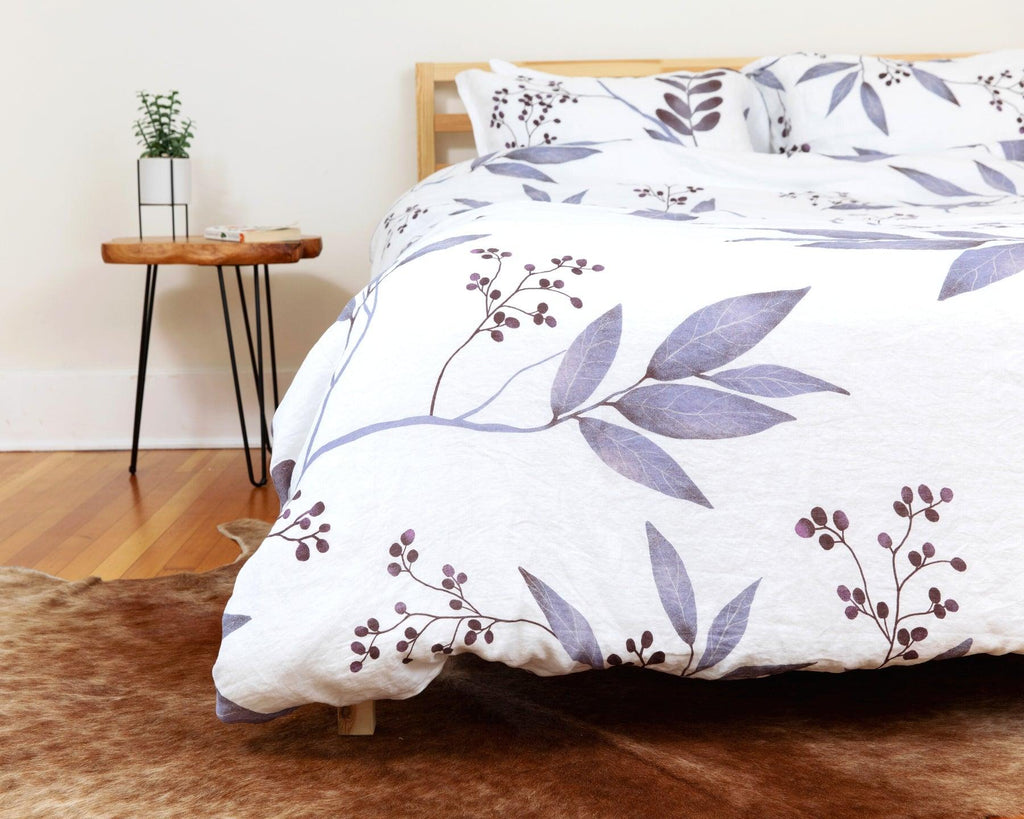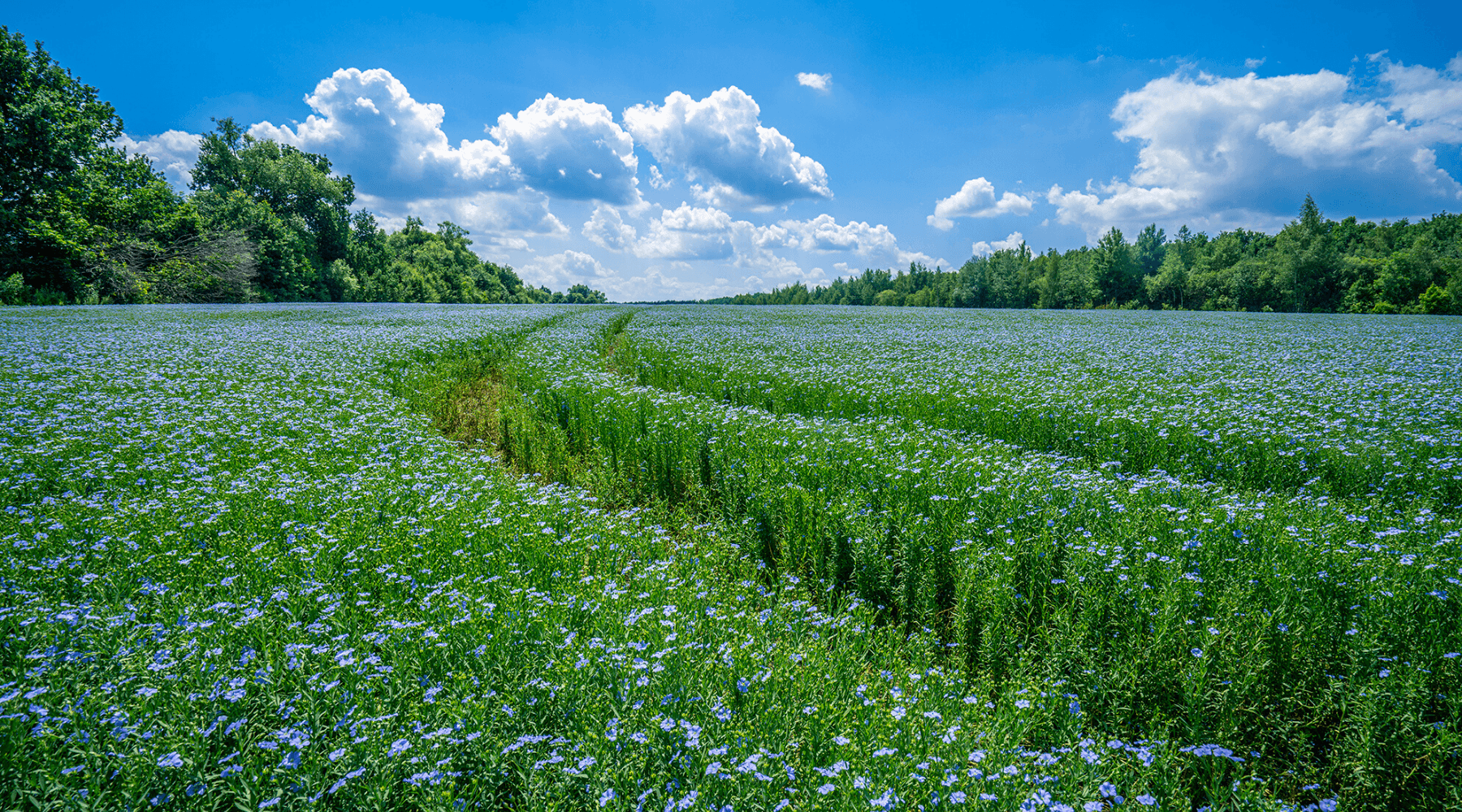
What Is the Difference Between Linen and Cotton?
Cotton and linen are two of the most popular natural fabrics in the world. Both have been used for thousands of years to make everything from clothing to bedding. Yet despite their similar applications, they differ significantly in terms of quality, comfort, durability, and environmental impact. At The Modern Dane, we choose linen—specifically GOTS, OEKO-TEX® Class 1, and European Flax® certified organic linen—not only because it performs better but because it aligns with our commitment to sustainability and ethical manufacturing.
In this article, we’ll take a closer look at the differences between cotton and linen, from how they’re grown and processed to how they feel and perform in your home.
Origins and Cultivation
Cotton is derived from the fluffy fibers of the cotton plant, a member of the mallow family. Various species of the plant are cultivated around the world, but they all share some common traits: cotton plants thrive in warm climates and require a lot of water and sun. However, cotton is highly vulnerable to pests, which is why conventional cotton farming relies heavily on pesticides and chemical fertilizers. In many cases, irrigation is also necessary, placing additional pressure on freshwater resources.

Linen, by contrast, is made from the stalks of the flax plant (Linum usitatissimum). Flax has been cultivated for textile use since prehistoric times and thrives in the cooler, temperate climates of Western Europe. Specifically, the best flax comes from a narrow coastal band stretching from Northern France through Belgium and into the Netherlands. Unlike cotton, flax grows well without synthetic fertilizers, pesticides, or irrigation when cultivated in its native region.

The differences in how these two crops are grown have profound implications for the environment and the people who work in the industry.
Environmental Impact

Linen, especially when grown in Western Europe under the European Flax® standard, is far more sustainable. Flax requires zero irrigation (rainwater is sufficient), zero GMOs, and zero waste—every part of the plant is used in the production of textiles, paper, oil, or livestock feed. The carbon footprint of linen is also significantly lower, especially when processing is done mechanically rather than chemically.
When you choose certified organic linen from The Modern Dane, you’re supporting farming practices that are regenerative, not extractive.
Fabric Performance: Durability and Longevity
One of the most striking differences between cotton and linen is how they perform over time.
Cotton, while soft initially, tends to wear out relatively quickly. It pills, thins, and tears with frequent use and washing. You might find yourself replacing cotton sheets every couple of years—especially if they’re lower thread count or made from short-staple fibers.
Linen, by comparison, is far stronger. Flax fibers are among the longest and most durable of any natural fiber used in textiles. Linen bedding can easily last a decade or more with proper care. And rather than wearing out, linen wears in—becoming softer, more supple, and more beautiful with each wash.
If you’re looking for heirloom-quality bedding, linen is the clear winner.
Comfort and Feel
Comfort is personal, but most people who try linen never go back.
Cotton is known for its smooth, soft feel, especially in sateen or high-thread-count weaves. However, this softness often fades with repeated washing, and cotton tends to trap heat and moisture. For hot sleepers, this can lead to discomfort during the night.
Linen, on the other hand, is naturally breathable and moisture-wicking. It regulates body temperature exceptionally well, keeping you cool in the summer and warm in the winter. Linen has a more textured feel initially, which some describe as crisp or lightly slubby. But with use and washing, linen softens significantly without ever losing its strength.
Because it allows air to circulate more freely and absorbs moisture without feeling damp, linen creates a fresher, drier sleep environment—perfect for those with sensitive skin or allergies.
Health and Safety: The Role of Certifications
At The Modern Dane, we go beyond simply choosing linen over cotton. We choose linen that meets the highest global standards for health, safety, and environmental responsibility:
-
GOTS (Global Organic Textile Standard) ensures our linen is organically grown and processed without toxic chemicals. GOTS also sets strict criteria for ethical labor practices throughout the supply chain.
-
OEKO-TEX® Class 1 is the most stringent certification offered by OEKO-TEX. It guarantees that our products are free from harmful substances and safe even for babies and those with chemical sensitivities.
-
European Flax® certifies that the flax used in our linen is grown exclusively in Western Europe under sustainable, zero-irrigation conditions. It also supports full traceability and transparency from field to fabric.
These certifications are your assurance that The Modern Dane bedding is not only luxurious but also responsibly made, safe, and sustainable.
Ethical and Social Impact
Beyond environmental sustainability, there is also a human cost to consider. The global cotton industry has long been associated with unethical labor practices, including unsafe working conditions and exploitative wages. Even organic cotton doesn’t always guarantee fair treatment of workers.
GOTS certification, which all our linen carries, includes comprehensive social criteria. This means safe working conditions, no child labor, fair wages, and the right to unionize are all baked into the standard.

Meanwhile, the European Flax® standard supports small family farms and upholds long-standing agricultural traditions in France, Belgium, and the Netherlands—regions with strong labor protections and environmental regulations.
When you choose our bedding, you’re not just choosing quality for yourself. You’re supporting a system that values people and the planet.
Aesthetic and Lifestyle Benefits
Linen doesn’t just feel good; it looks good, too.
Its natural texture and subtle sheen give it a lived-in elegance that works across a range of interior styles—from minimalist and Scandinavian to rustic and bohemian. Linen wrinkles gracefully, adding character and charm to the bedding rather than demanding constant ironing or maintenance.
Because of its durability and timeless appeal, linen also aligns with a more intentional, less disposable way of living. Instead of cycling through cheap sheets every few years, you can invest in something that lasts—both in quality and in style.
Linen for Sensitive Skin and Allergies
If you suffer from allergies, skin sensitivities, or conditions like eczema, linen may be the better choice.
Our OEKO-TEX® Class 1 certification guarantees that our linen is free from formaldehyde, heavy metals, and other common irritants. Linen is also naturally antibacterial and resistant to dust mites and mold. Its breathability reduces the buildup of moisture, which can harbor allergens.
Cotton, especially if not organically certified, may contain pesticide residues or be treated with finishing chemicals that can irritate sensitive skin.
When your bedding touches your skin for 8 hours a night, it matters what it's made of. Linen offers peace of mind and comfort in one.
The Bottom Line: Linen vs. Cotton
| Feature | Cotton | Linen |
|---|---|---|
| Durability | Prone to wear, pills easily | Exceptionally strong and long-lasting |
| Environmental Impact | High water use, pesticides, fertilizers | Low-impact, no irrigation, sustainable |
| Comfort | Soft but heat-trapping | Breathable, moisture-wicking, temperature-regulating |
| Softness Over Time | Can lose softness | Gets softer with every wash |
| Certifications | Varies widely | GOTS, OEKO-TEX® Class 1, European Flax® |
| Allergy-Friendly | Can retain moisture, harbor allergens | Antibacterial, hypoallergenic |
| Ethical Production | Not always guaranteed | Strict labor standards through GOTS, European Flax® |
Why We Only Use Certified Linen
At The Modern Dane, we believe that better sleep starts with better materials. That’s why we’ve chosen to work exclusively with organic, certified European linen. It’s not just a luxurious alternative to cotton—it’s a healthier, more sustainable, and more ethical one, too.
When you choose our bedding, you’re making a conscious choice for quality that lasts, comfort that grows, and practices that align with your values.
Ready to make the switch? Explore our collection of organic linen bedding and experience the difference for yourself.







